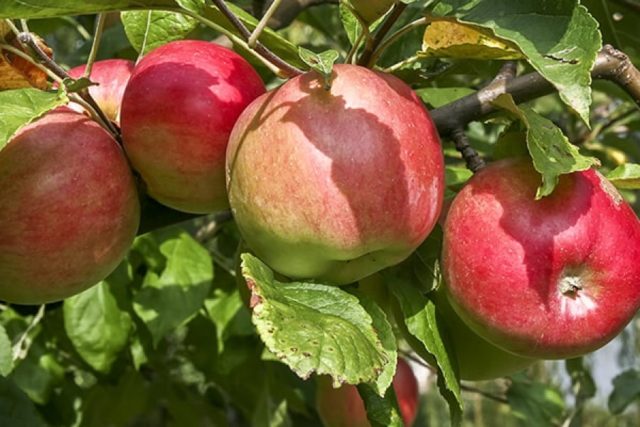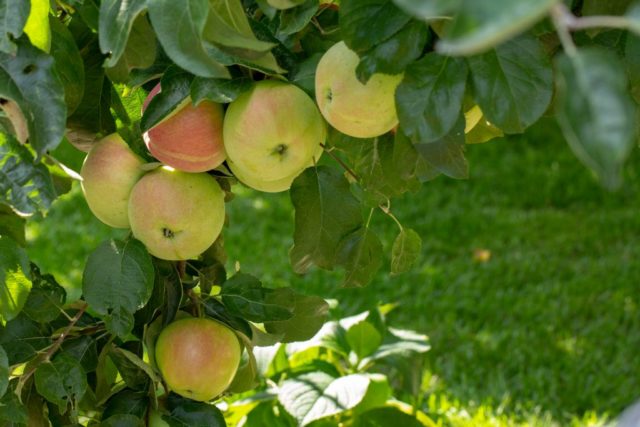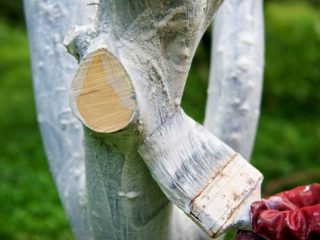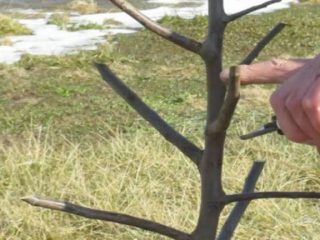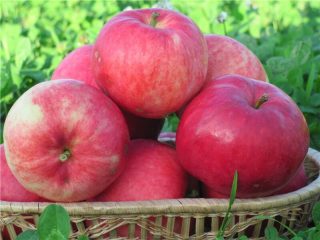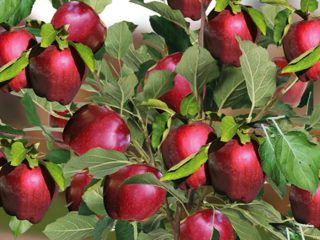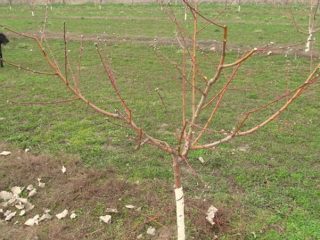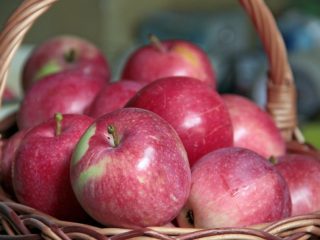Content
For many gardeners, selecting fruit crops for a plot becomes a difficult task. One of the successful solutions is the Sokolovskoe apple tree variety. It is this plant that has recently been increasingly grown in private gardens and on an industrial scale.
Description of the creeping apple tree Sokolovskoye
Small-growing dwarf varieties, which include the creeping Sokolovskoye apple tree, are easy to care for, process and harvest. In addition to these advantages, the variety has other distinctive features, thanks to which it has gained great popularity.
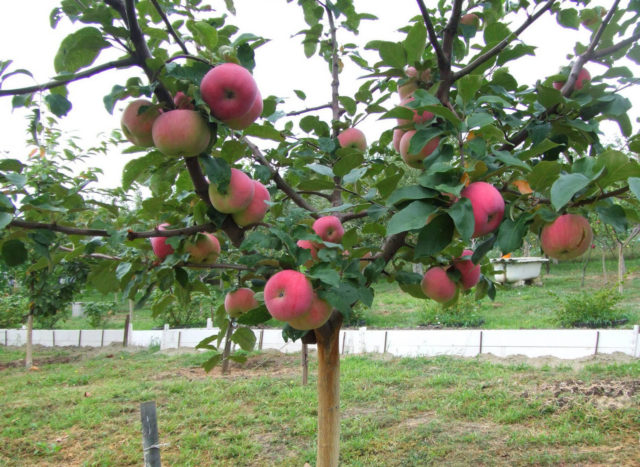
In 2003, the variety was zoned and recommended for cultivation in the Ural region
History of selection
The winter apple tree variety “Sokolovskoe” was bred at the South Ural Research Institute of Horticulture. The authors are breeders Mazunin M.A., Mazunina N.F., Putyatin V.I. The variety “Vidubeckaya pendula” was used as a pollinator of seedlings.The name of the dwarf apple tree was given in honor of the director of the research institute N.F. Sokolov, who actively supported the breeding work of scientists.
Appearance of fruit and tree
The apple tree of the Sokolovskoe variety has a height of 1.5 to 2 m if grown on seed rootstocks and from 1 m to 1.5 m if propagated vegetatively. The crown is horizontal, spreading, often flat. The annual growth of the apple tree is 15-20% less than that of other species. Over time, it decreases and the tree stops growing. The bark on the trunk is brown, the shoots are brown-green, elastic and strong. The leaves are emerald, large, round, with slight pubescence and a serrated edge.
The fruits of the dwarf apple tree "Sokolovskoye" are slightly larger than average in size, round, flattened at the top and bottom. The skin is smooth, dense, with a slight shine. Apples when ripe are greenish-yellow, with a pronounced dark red blush covering a large surface of the fruit. The apple stalk is powerful, straight, and of medium length.
Lifespan
The lifespan of dwarf apple trees is only 15-20 years. After this, they must be replaced with new seedlings. Thanks to the productivity and compactness of the Sokolovskoye apple tree, the variety during this time bears no less fruit than ordinary tall ones over 50 years of life.
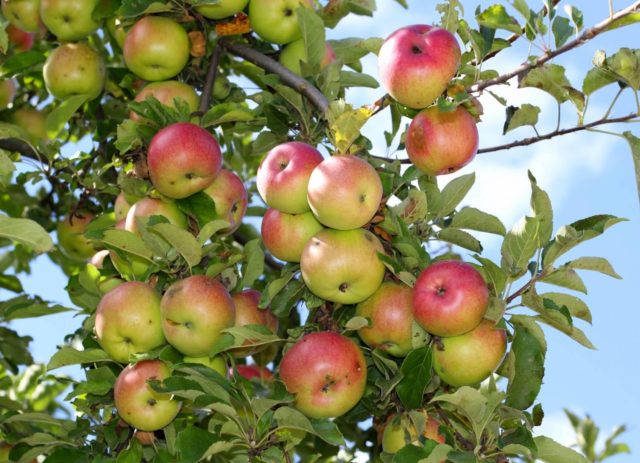
In hot, dry summers, the apple tree requires daily watering.
Taste
The fruits of the Sokolovskoe variety are sweet, pleasant to the taste, juicy, with a slight sourness. The pulp is creamy, fine-grained, not loose. The sugar content per 100 g of product is about 11%. Tasting score: 4.3 points.
Growing regions
The main enemy of the Sokolovskoye apple tree is heat. Therefore, growing it in the southern regions is not recommended.The dwarf variety is zoned for the Urals (Chelyabinsk, Kurgan, Orenburg regions, Bashkortostan), and feels good in Siberia, where snow cover protects it from freezing in severe winters.
Productivity
When grown on an industrial scale, the yield of the Sokolovskoye variety is more than 200 c/ha. For one apple tree this figure is 60-65 kg.
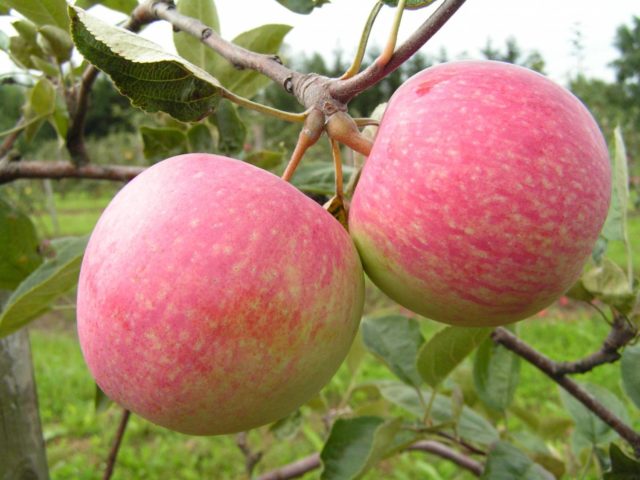
The planting site for apple trees should be sheltered from northern winds and drafts
Frost resistance
The variety is winter-hardy; it tolerates low temperatures well, but the flower buds may freeze in severe frosts. In winters with little snow, it is recommended to mulch the tree trunk circle and use covering material.
Resistance to diseases and pests
Under unfavorable weather conditions and poor agricultural practices, apple trees of the Sokolovskoe variety are susceptible to black cancer. Among the main signs are brown spots at the sites of infection. Gradually they increase in size and turn black, capturing more and more new areas. To fight cancer, you need to clean the affected areas, treat with Bordeaux mixture and garden varnish.
Apple tree coccomycosis manifests itself in the form of brown spots on foliage, fruits and shoots. Infection can be prevented by timely removal of leaves from under trees.
Fruit rot is not common, but poses a great danger to the Sokolovskoye variety. The source of infection is rotten fruits, which should be promptly removed from the garden.
The undeniable advantages of the Sokolovskoye variety include resistance to scab.
To protect fruit trees from aphids, codling moths and leaf rollers, it is recommended to use preventive whitewashing of trunks, install traps and use chemicals.
Flowering period and ripening period
The first fruiting of the Sokolovskoye apple tree is observed in the 3-4th year of life. Flowering begins in the third decade of May and lasts about three weeks. This duration is explained by the gradual blooming of the buds. The buds located near the ground bloom first, then those higher.
With the arrival of the first frosts, at the end of autumn, the fruits ripen. Depending on the growing region and weather conditions, the timing of flowering and harvesting of apples can be shifted in both directions.
Pollinators
The Sokolovskoye apple tree is not self-fertile. To form ovaries, the variety requires pollinators that coincide in flowering time. Breeders recommend using dwarf apple trees for this purpose:
- Bratchud (Bratchood).
- Carpet (Kovrovoe).
- Snowdrop (Podsnezhnik).
Transportation and keeping quality
Due to its high commercial qualities, the Sokolovskoye apple tree variety can be transported over long distances. The thick skin prevents damage and spoilage of the fruit. Under optimal conditions, apples can be stored for about 4-5 months.
Advantages and disadvantages
Among the main advantages of the Sokolovskoye variety:
- compactness of the tree;
- ease of care and harvesting;
- resistance to scab;
- excellent taste of fruits;
- high productivity;
- storage duration;
- possibility of transportation.
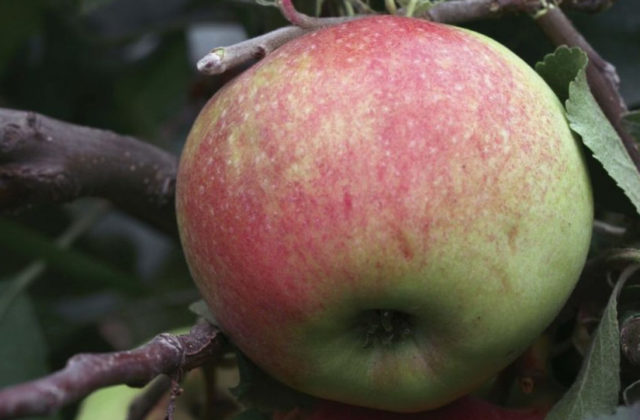
Apples have good scab resistance
There are not many disadvantages to the Sokolovskoye apple tree:
- irregularity of fruiting periods;
- high probability of damage to flower buds when exposed to low temperatures;
- decreased fruit quality in hot, dry weather.
Landing
When choosing a place to plant an apple tree of the Sokolovskoye variety, you need to take into account that high groundwater is unfavorable for the root system of the fruit tree and leads to a dry crown. It does not like swampy, sandy areas or lands rich in lime. The ideal soil for planting is light loam, podzolic or soddy-carbonate soils.
To plant a dwarf apple tree “Sokolovskoye”, it is necessary to perform a number of sequential operations:
- Dig a hole up to 100 cm deep and about 80 cm wide.
- Loosen the soil at the bottom of the hole to the depth of a spade bayonet.
- Pour fertile soil into it, adding one glass of superphosphate, wood ash and compost (3 buckets).
- Mix all ingredients thoroughly.
- Make a mound of fertile substrate.
- Soak the root system of the seedling for a day.
- Install a support for the future seedling.
- Place it in the center of the hole and, straightening the roots, cover it with soil.
- Tie the apple tree to a support.
- Water thoroughly and mulch the soil.
Growing and care
During the first time after planting, the tree trunk circles need to be cleared of weeds and mulched. Watering is carried out once a month, using for this purpose a number of containers equal to the age of the seedling (3 years - three buckets of water).
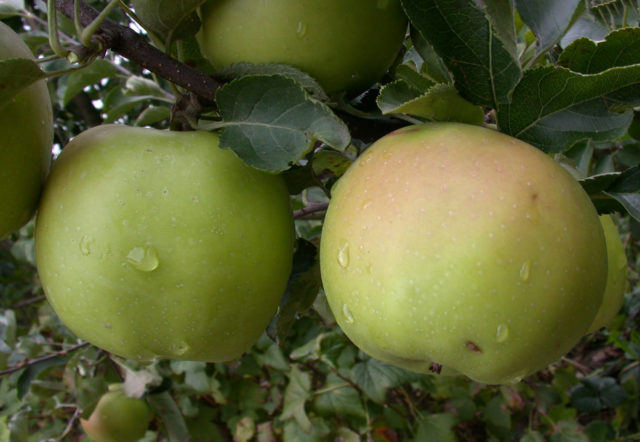
In spring and autumn, the trunks are whitewashed and the crowns are treated against pests and diseases.
Feeding is carried out three times per season. In early spring, urea is added to the soil, in summer (June) the crown is sprayed with sodium humate, and fed with phosphorus-potassium fertilizers in September.
Crown formation
Pruning and shaping the crown of the dwarf apple tree of the Sokolovskoye variety must be done on time and correctly, otherwise it will be difficult to correct the mistake. Thanks to this operation, it is possible to regulate fruiting, achieve compactness of the crown and its harmonious development.
Natural
This option involves the formation of a natural-looking crown. In the second year of life, the seedling's conductor is shortened by 20%. The next year, strong growths are cut back to the same length, ensuring the tree grows evenly in any direction.
creeping
The Sokolovskoye apple tree is formed artificially by bending and pinning branches to the ground. The creeping shape of the crown is created using special structures, wooden stakes, twine, which promote the growth of shoots in the horizontal plane.
Vegetative-clonal
On the lower tier, the branches are brought together artificially (3-4 each). The remaining shoots are placed one at a time, placing the first at a distance of 40 cm from the lower tier, and the next ones at an interval of 20 cm from each other.
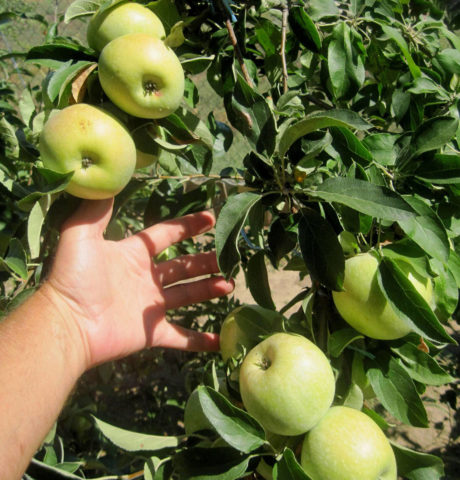
To prevent depletion of the seedling, in the first two years it is necessary to remove the blooming buds
Collection and storage
The collection of Sokolovskoye apples begins in September, after which they are stored and ripened. When maintaining optimal temperature and humidity in the room, the fruits do not lose their quality for 4 months.
Conclusion
The Sokolovskoye apple tree variety not only serves as a decoration for the garden, but if all planting and care rules are followed, it brings an annual high-quality harvest.Ease of maintenance of fruit trees is another reason for the growing popularity of the winter dwarf variety.
Reviews

